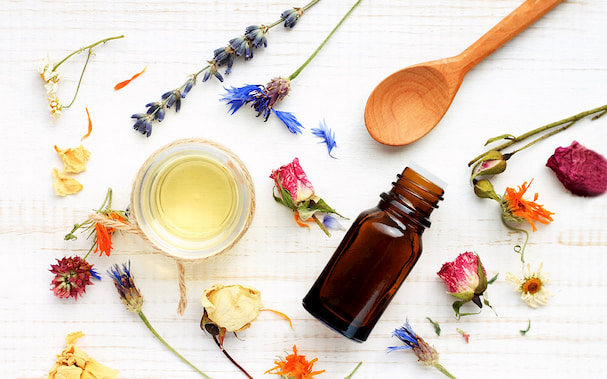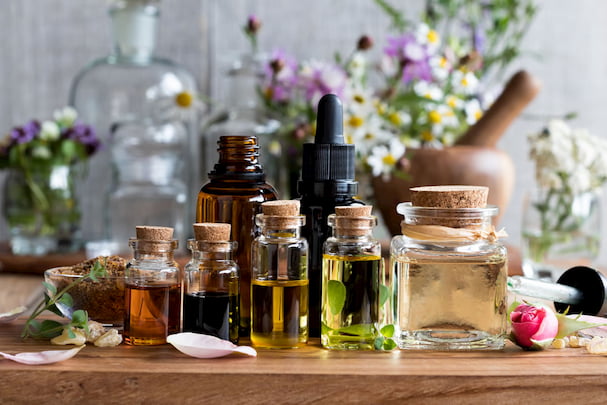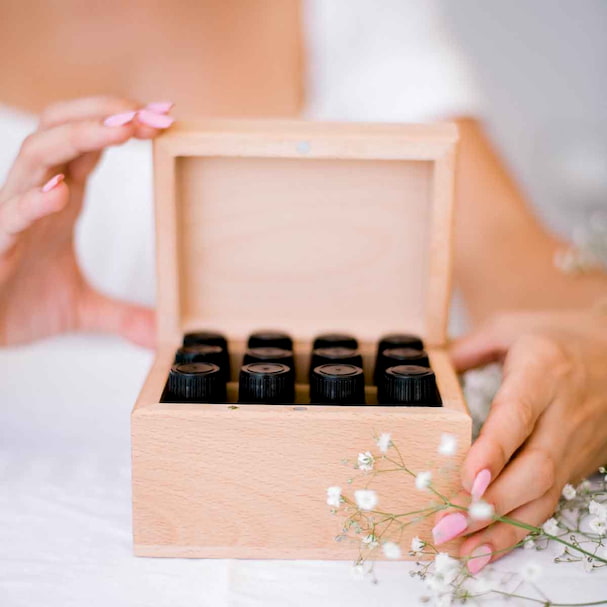Find Out How to Make Your Own Essential Oils
Essential oils have been used for cosmetic and aromatherapy purposes for ages, the latter especially. The reason for that is because when used properly, they can have an uplifting effect on the mind and promote calmness.
These fragrant and soothing oils work even better when in synergy with each other, thus mixing their compounds together and offering numerous therapeutic benefits.

Source: mamanatural.com
In the process of blending essential oils, one oil can balance out the weaker parts of another and create a unique aromatherapy experience.
You can make your own essential oils to replicate some of your favourite blends and customise them to meet your scent preferences or try new scents, depending on how you feel at the given moment.
Essential oil blends can be used for many different purposes, such as supporting and balancing hormones, easing feelings of depression and anxiety, boosting your metabolism and supporting overall health and wellness.
Blending essential oils is a fun and budget saving activity to keep you busy with the kids, or help you spend some time alone, enjoying a rewarding and relaxing experience.
Very often, essential oils can be used as cleaning supplies as they’re highly effective and have powerful cleaning properties. Moreover, they’re safe to use around your family and pets and will reduce the use of chemicals in your home.
You can make your own essential oil blends using your favourite scents.

Source: ascensionkitchen.com
Categorize Your Essential Oils
Before you create your own aromatherapy recipes, make sure to group your essential oils first. In aromatherapy, the number of oils that blend are two to five.
You can find many different kits and blending formulas for making your own natural and toxic free cleaning products, simple skincare products, massage oil blends and more.
Type of Effects
Categorizing essential oils by the type of effects they have can help you classify your oils as calming, energizing, or any other mood or health benefit you’re going after.
The most popular oils with a calming effect are lavender, bergamot, jasmine, sandalwood, geranium, and many others, while to achieve an energizing effect you can use rosemary, lemongrass, eucalyptus, peppermint, tea tree, grapefruit, ginger and more.
Some of these, such as peppermint, grapefruit and rosemary can have a detoxifying effect as well, while lavender, geranium, sandalwood or bergamot can help against anxiety.
Blending essential oils from the same category is usually the best option that works perfectly and allows a great mix with complementing quality properties.
Scent Types
Another way to group your essential oils is by categorizing them by similar smelling scent types. Some oils can fit into more categories, there is no right or wrong when it comes to scents, it mainly depends on what you prefer and then take it as base inspiration for your blending mix.
If you like flowery scents, you can opt for jasmine, lavender, geranium, rose, neroli, palmarosa, ylang ylang, geranium, petitgrain and many more, while for more herbal scents you can choose basil, eucalyptus, chamomile, patchouli, peppermint, rosemary, tea tree, marjoram, sage and many others.
If your favourite scent is citrusy, then you should definitely go for grapefruit, citronella, lemon, lemongrass, lime, sweet orange, mandarin, tangerine, may chang, bergamot and other similar scents.
For a spicier scent pick cinnamon, pepper or ginger, and you can find woody scents in frankincense, cedarwood, sandalwood, cinnamon, ginger, juniper, pine and black pepper.
Woody and flowery scents combine well with most other categories, while spicy scents can easily overpower other aromas and are usually blended with flowery and citrus scents.

Source: cleanmyspace.com
Evaporation Rate
To start blending your essential oils, you’ll need a selection of staple oils, top, middle and base scent notes.
Top notes are lighter in intensity, with a mild and short fragrance and they’re the part of the fragrance you notice first. Usually, they’re considered fresh and uplifting scents.
Middle notes are the predominant oil in the blend, with a soft scent. They provide balance to your blend and are more mellow than the other notes, which allows them to show off their quality.
Base notes are sharper, stronger and long-lasting, and provide a solid scent foundation to build upon. Most commonly, these scents are intense, rich and grounding. To ensure a smelling and consistently active blend for your personal and home use, blend essential oils with the same oil notes.
The most popular top notes are bergamot, citronella, peppermint, spearmint, tangerine, sweet orange, eucalyptus, grapefruit, lemon, lemongrass and lavender.
For middle notes, chamomile, cinnamon, fennel, geranium, neroli, marjoram, jasmine, rosemary, palmarosa, ylang ylang, or tea tree are the most common choice.
And most frequently used base notes are cedarwood, frankincense, patchouli, sandalwood and ginger.
Steps and Tools Needed
Creating essential oils mixes doesn’t necessarily take a lot of time, there’s no rush and you can enjoy the process step by step…
Start with small bottles, 10 to 15 ml, so even if the blend is not perfect, you won’t waste a large amount of oils. Glass bottles work very well for essential oils blending, as glass doesn’t react when oils evaporate.
Fill the bottle almost to the top with your choice of carrier oil. Then select the oils you’ll be using for your blend. For a safe dilution rate between 2.5% and 3%, you’ll need 8 drops of each oil.
Put one drop of each, feel their smell, and keep adding one drop at a time. Every time you make your own custom blend, write it down and save it for the next time.
Essential oils are highly concentrated, so it’s a good idea to use gloves and avoid getting any on your hands, especially if you have sensitive skin. Always read the safety labels and instructions for the product you choose.
Also, you can use droppers, pipettes, or reducer caps. Now, most essential oils come with a reducer cap, but in case there are not any available, you can use some glass droppers or pipettes for controlled blending.
Next, smell and observe how your blend transforms as the oils evaporate and different aroma notes come to the fore in different stages. Everytime you make your own essential oil, most probably you’ll find this as the most enjoyable part of the process over and over again.

Source: eEcomodernessentials.com.au
Store Your Essential Blend Properly
Once your blend is created, you can seal and label the glass bottle, place it in a wooden box and let it evolve and mature for a day or two.
Over this time, a dynamic process takes place, where the components of every oil settle and interact with each other and form the final aroma. Preferably, keep your blends in a cool and dark place to ensure they lasts longer.